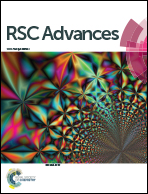Energy decomposition analysis of gauche preference in 2-haloethanol, 2-haloethylamine (halogen = F, Cl), their protonated forms and anti preference in 1-chloro-2-fluoroethane†
Abstract
2-Haloethanol and 2-haloethylamine (halogen = F, Cl) prefer gauche conformation. This preference is significantly increased upon protonation. Commonly used explanations are based on intramolecular hydrogen bonding and hyperconjugation. 1,2-Difluoroethane prefers gauche conformation, too, while gaseous 1-chloro-2-fluoroethane is more stable as the anti conformer. The origin of these conformational preferences has been investigated by a quantitative partitioning of the gauche/anti energy difference into contributions from electrostatic, orbital, dispersion and Pauli interactions, and structural changes accompanying the rotation. The results show that, with two exceptions, the most important contributor to the gauche preference is electrostatic attraction, which is larger in gauche forms relative to the anti ones. Next come orbital interactions, while dispersion forces provide the smallest stabilizing energy. These energy components override destabilizing Pauli interactions and energetically costly structural changes. All gauche preferences also benefit from stereoelectronic effects, except in protonated 2-chloroethanol which, instead, shows a significant Cl lone pair → O–H antibond mixing, associated with hydrogen bonding. The increase in the Pauli repulsion upon anti to gauche isomerization is more pronounced for fluorine than for chlorine derivatives. Thus, the smaller gauche effect in chloro-compounds and the anti preference in 1-chloro-2-fluoroethane have their origin in the decrease in electrostatic and orbital stabilizing interactions, a drop in the former being more pronounced.


 Please wait while we load your content...
Please wait while we load your content...